No Man’s Sky… Why the Massive Day 0 Patch?
Posted by Rampant Coyote on August 8, 2016
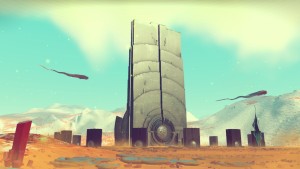 There was something of a crapstorm recently about the much-hyped (dangerously hyped!) No Man’s Sky, between a fan who paid over a thousand dollars to play the game early, and some stores which broke the street date on the PS4. Early reports suggested that (*GASP*) the game might be overhyped and might not actually be the be-all, end-all of video gaming. Okay, I’m exaggerating the complaints a bit, but to hear the rumblings… hoo boy.
There was something of a crapstorm recently about the much-hyped (dangerously hyped!) No Man’s Sky, between a fan who paid over a thousand dollars to play the game early, and some stores which broke the street date on the PS4. Early reports suggested that (*GASP*) the game might be overhyped and might not actually be the be-all, end-all of video gaming. Okay, I’m exaggerating the complaints a bit, but to hear the rumblings… hoo boy.
Sony responded that without the Day 0 patch, the game as it appears on the disk is not representative of the final game. Developers Hello Games explained that the PC version (delayed a few days past the PS4 release) will not have those problems exhibited in the unpatched PS4 disk. A lot of people dismissed that as damage control, but then the details of the patch were released… and it’s a monster.
If you care, and have caught wind of these complaints, you may be interested in reading about it: The huge list of changes on release of No Man’s Sky.
So what gives? What’s up with these giant Day 0 patches anyway? That totally sucks that the game is no fun on the disk until it is patched, right?
Well, yes… but it’s not really a result of sloppy coding or rushed production or anything like that. It’s simply the realities of a system that is at least a decade out of date. Rami Ismail offers a fantastic explanation full of truth that those who have never made games for console might never realize:
I don’t even want to provide an excerpt, because you really need to read the whole thing. But … a poor synopsis is this: It behooves a studio to submit a game for certification as early as it can be considered a release candidate, but they aren’t going to just twiddle their thumbs for the eight weeks between cert submission and the release street date.
Of course, I could just say this is another reason that PC gaming is the best, without any certification and now that it has migrated away from disks as the principle means of distribution, but… well, PC gaming can also be the dumping ground of incomplete, crappy titles. It was happening long before the digital distribution era. And then there’s the whole submission for ratings thing. And the marketing thing. Basically, no matter what you do, there’s a whole lot of stuff that needs to happen between “it’s ready” and “it’s out,” especially for a major title, and games are never truly “completed” by the developer. They just eventually don’t get updated anymore.
Since stores have been breaking street dates for as long as I can remember, the only surprise here is the guy who paid serious bucks for early access, and the level of hype surrounding this title which magnifies potential disappointments. That’s not to say that No Man’s Sky won’t disappoint… for the level of hype that’s grown around this title, I think it’s almost impossible for it not to disappoint anyone who has bought into the hype. And there’s a very real chance it will be lame even for those of us who believe we have more realistic expectations. It just means not to put too much stock in early, pre-launch, pre-patched software, or to get too upset about substantial day 0 patches.
Of course, tomorrow is launch day (for PS4 players… not me), so a lot of this conjecture and speculation will finally be put to rest. I’m going to be at a convention when it released for the PC, so… as usual… I’m gonna be late to the party.
Filed Under: General - Comments: 2 Comments to Read
Rocksmith 2014 Gets an Update – And a Concert!
Posted by Rampant Coyote on August 5, 2016
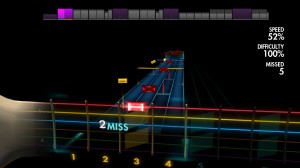 Rocksmith 2014 Edition Remastered is coming out this fall. Besides adding six new songs to the original lineup, it addresses nearly everything I’ve had on my wishlist over the years (yes, I’m still playing… though not as often as I should. But I’m still improving!). It will be released on all six platforms (Windows, Mac, PS3, PS4, Xbox 360, and Xbox One). It will be a new retail release, as well as a free update for all existing owners.
Rocksmith 2014 Edition Remastered is coming out this fall. Besides adding six new songs to the original lineup, it addresses nearly everything I’ve had on my wishlist over the years (yes, I’m still playing… though not as often as I should. But I’m still improving!). It will be released on all six platforms (Windows, Mac, PS3, PS4, Xbox 360, and Xbox One). It will be a new retail release, as well as a free update for all existing owners.
For one thing…. my song library has gotten pretty large over the years. The Rocksmith team referred to it in a recent streaming chat as it being “crushed under the weight of its own success.” They are offering new tools to manage the song library with improved search, sort, and filter tools. Even better, you can build multiple song lists (playlists!) for Nonstop Play. This has been a request of mine for a while. The song lists can also be used as filters for the Learn a Song mode. For me, I have a short list of songs that I’m actively trying to learn / master, a bunch of songs I have already gotten pretty good at that I want to make sure I review from time to time so I don’t forget how to play them, and then a whole lot of favorites I just like to try out every once in a while just for fun, and to see if I can increase my score.
Another enhancement to Nonstop Play is that you can filter by tuning – which is half the reason I wanted custom playlists in the first place. In both the song hub and in Nonstop Play, all arrangements will now be directly available. This means you don’t need to change your “path” anymore. This will be really nice (and is another reason I wanted custom playlists in Nonstop Play – I wanted songs I prefer to practice for lead work, and those I preferred to practice the rhythm parts).
The Riff Repeater gets some needed interface improvements. Even though it was a vast improvement over the original Rocksmith, it’s still a little clumsy to use. Part of that is no doubt because of the limitations of game controller support, something those of us belonging to the Glorious PC Gaming Master Race don’t really understand. But I welcome the improvements. Ubisoft is also promising the ability to better control the dynamic difficulty adjustments, and better in-game player statistics to track your progress.
Anyway – small improvements, but RS2014 is pretty amazing as it is, and didn’t need much. Existing RS2014 owners get the upgrade for free. We won’t get the new songs (which includes Bob Marley’s Three Little Birds, Elvis Presley’s Suspicious Minds, and Train’s Drops of Jupiter) – those will be available as separate DLC for existing owners, but free for new owners of the remastered edition.
As a side note, they’ve gone back to manufacturing cables again, so those will be more available – and more reasonably priced – again soon.
It’s not a major overhaul of the game. I’m actually pretty glad about that – with a handful of exceptions, it’s been a fantastic tool, and there’s not much I’d want to see done differently. If you have an electric guitar gathering dust in the closet that you’d like to really learn to play someday and haven’t picked up this game yet, the new edition might be a great way to start.
The other thing they are doing to celebrate the 5th anniversary of the franchise is a live concert featuring Rocksmith players who have honed their skills in the game. They jokingly refer to this as the “Ultimate Master Mode” – playing at Slim’s in San Francisco on stage in front of a live audience. They’ll be picking two Rocksmith players to act as “ambassadors of the game” to show the world how Rocksmith taught them to play guitar or helped them improve. The headliner will be the ultimate Rocksmith-taught guitarist, 12-year-old Audrey from Japan.
Anyway, pretty cool stuff. No, I won’t be submitting anything… but I’ll be cheering on the winners. It’s a really cool opportunity.
You can get more information here: Rocksmith Live at Slim’s
As a fan of the game, I’m pleased to see that it’s still going strong. It’s my digital songbook and a really fun way to practice. I think it’s the only way I *would* practice, especially when I’m working the extended-hours at the day job and have so much to get done at night. Practicing the guitar would totally have fallen to the wayside by now. It’s as much entertainment as it is practice. That’s a great motivator.
Filed Under: Guitar Games - Comments: 2 Comments to Read
Book Bomb: Death by Cliché
Posted by Rampant Coyote on August 4, 2016
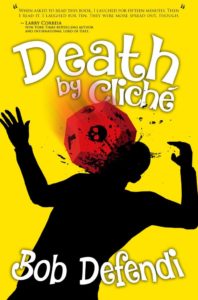 Today is the day we’re trying to raise awareness (and spike sales) of a great book by Bob Defendi, Death by Cliché. I wrote about it a couple of weeks ago.
Today is the day we’re trying to raise awareness (and spike sales) of a great book by Bob Defendi, Death by Cliché. I wrote about it a couple of weeks ago.
Anyway, it’s awesome, my wife and I are both anxious for the sequel. Bob – who has written RPGs (the dice-and-paper kind) and supplements himself – really knows his subject matter… both writing and RPGs. The book pokes fun at tropes on both sides, but also turns it into a compelling story.
Anyway, if you are interested in a weird, comedy fantasy romp taking place in the world of a less-than-adequate game master, today would be the day to pick up a copy.
Filed Under: Books - Comments: Comments are off for this article
10 Classic Game Development Post-Mortems
Posted by Rampant Coyote on August 3, 2016
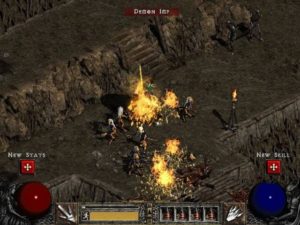 For many years, Game Developer Magazine and Gamasutra published Postmortems. They were always fascinating insights into the struggles of teams making some of the most popular games of the era. While there were fascinating tidbits unique to each game, a lot of the struggles and “best practices” were common, almost to the point of being universal.
For many years, Game Developer Magazine and Gamasutra published Postmortems. They were always fascinating insights into the struggles of teams making some of the most popular games of the era. While there were fascinating tidbits unique to each game, a lot of the struggles and “best practices” were common, almost to the point of being universal.
Alex Wawro has linked to ten of his favorites… coincidentally (or not) they are all PC games, including many classics of the 1990s (and, I guess, early 2000s): Diablo II, System Shock 2, Deus Ex, Baldur’s Gate II, Unreal Tournament, and more. While the technology for making games has changed, most of the underlying principles are unchanged. On top of this, it’s really fascinating getting a glimpse into how these favorites were made.
10 Seminal Game Post-Mortems Every Game Developer Should Read
If you want to spread the net a little wider, there are hundreds of postmortems archived at Gamasutra. Pick some favorites and see what went into their development:
Filed Under: Game Development - Comments: Comments are off for this article
Impressions: Stranger Things
Posted by Rampant Coyote on August 1, 2016
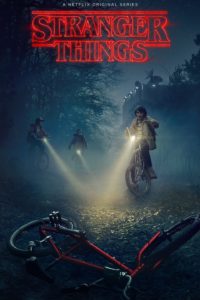 This weekend, we finished watching the series (first of many seasons, I hope) “Stranger Things” on Netflix. Here are some of my impressions.
This weekend, we finished watching the series (first of many seasons, I hope) “Stranger Things” on Netflix. Here are some of my impressions.
First of all — the gimmick. As I’ve often said, in all entertainment media, you need some kind of gimmick just to get attention. In the case of Stranger Things, the gimmick is that it’s an homage to the popular science fiction / supernatural films of the late 1970s and 1980s, like E.T., Poltergeist, The Goonies, Aliens, Close Encounters of the Third Kind, A Nightmare on Elm Street, The Thing, etc. It’s set in the 1980s, contains lots of 1980s references. In particular, references to Dungeons & Dragons and Star Wars series are thrown around by the younger cast members as an explanatory short-hand as they try and figure things out. They cast also includes two 80s icons — Matthew Modine and Winona Ryder.
The interesting thing is that the gimmick feels unnecessary. While it’s fun playing “guess the reference” and seeing some of the more obvious call-outs to 1980s pop culture, it almost overshadows a really solid original story and great characters. Fortunately, the references and ideas and feel of those old films are used more as an imaginative springboard into new territory, and the show can be enjoyed completely on its own merits even if you have never seen the referenced materials. (For one, I understand there are references to Altered States, a film I’ve never seen, and it didn’t impact my enjoyment at all).
On paper, it sounds like the mishmash of material, from the cute kids-movies E.T. and The Goonies to the freaky-scary-horror of A Nightmare on Elm Street or Halloween, would result in nasty identity crisis for the show. This would be exacerbated by the fact that the show focuses on three different sets of characters: a group of younger kids (around 12) who are more open-minded to the seemingly impossible, teenagers with their angsty relationship issues, and adults full of grown-up emotional baggage. Amazingly, though, it all works as a cohesive whole. The broad source material comes together as a freaky, creepy whole, and the separate stories — intended, no doubt, to appeal to the broadest age groups of audiences — intersect reasonably well to form a single narrative.
The story revolves around the mysterious disappearance of boy in a small Indiana town in 1983. This coincides with the appearance of a girl called “Eleven” (whom the younger characters dub “El”) with frightening powers. A deadly government conspiracy and a terrifying extra-dimensional monster round out the plot elements.
While it wasn’t clear initially, it felt like the story was tailor-made for me. Maybe not perfectly executed, but at least aimed directly at me as the target audience. I’m an 80s kid who grew up on those films, who has been fascinated with The Twilight Zone, a Dungeons & Dragons player, and an author who has written weird paranormal fantasies about extra dimensions inhabited by creepy monsters, and this show was intended to hit every one of those passions in my life. I think it’s a little creepy that the showrunners have been stalking me and making individualized entertainment for me, but other than that I appreciate the effort.
While the show is probably PG fair (at least straddling the border into PG-13 territory) and is aimed towards family audiences, it’s really too frightening for younger children. As often as it channels E.T., it’s several shades darker than that Spielberg classic. It is genuinely creepy and scary in parts, and tastefully deals with some pretty grown-up subject matter.
I ended up really liking all the principle characters, especially the younger kids and Winona Wyder’s character. I thought the latter really showed Ryder’s acting chops. At first, she was just hysterical, and I wasn’t too impressed. But towards the end, she showed some real range and depth.
All-in-all, I’m joining the chorus of voices expressing a love for the show. From the trailer (below) I was interested.I don’t think the trailer does it justice, though. If you are interested in a creepy SF thriller, especially one that tries to capture the spirit and flavor of the 1980s blockbusters and cult classics, then this 8-episode series is one you really should check out if you have Netflix.
Filed Under: Impressions - Comments: 3 Comments to Read
A Milestone: The Next Generation of Game Geeks Gets Going
Posted by Rampant Coyote on July 28, 2016
My wife and I were just kids when we got married. At least, that’d be the assumption today. We were both still in school, and didn’t have much money saved up. We made do, and made it work. Splurging on a video game was a big deal. I was a PC gamer somewhat out of necessity. But when we could afford a game, I’d play the ever-living crap out of it, simply because it was going to have to be my dominant form of entertainment aside from TV and library books. We’d swap games with friends (many of whom were also newlyweds and in similar financial situations) to stretch the ol’ gaming dollar. Like I said, we made it work. Some weeks we were digging under the couch cushions for loose change to buy milk, but we managed.
We took a gamble as my graduation approached. My wife became pregnant, and we hoped that I’d have a solid “career” job by the time the baby was born. We were lucky. Within three months of my taking a game development job at SingleTrac after graduation, our daughter Rowan was born.
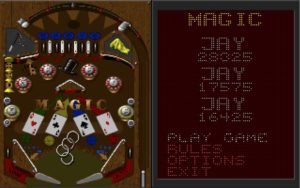 As I’ve said before, I tend to measure time by what games I was playing when. It’s how my brain sorts out the information and helps piece events together in chronological order. My wife was also working as a teacher at the time, which made things challenging. Very challenging. We kinda slept in shifts, with “baby duty” schedules so that we could get a few hours of sleep without too many interruptions. While my wife slept her shift, I played games with the sound turned down low not far from my daughter’s crib. I think her little baby ears might have picked up the tiniest sounds of monsters dying in Doom. And the barely-audible thrumming of the soundtrack to the original X-Com. Neither were exceptionally new games at the time. We were exhausted all the time, so I was relaxing with some favorites.
As I’ve said before, I tend to measure time by what games I was playing when. It’s how my brain sorts out the information and helps piece events together in chronological order. My wife was also working as a teacher at the time, which made things challenging. Very challenging. We kinda slept in shifts, with “baby duty” schedules so that we could get a few hours of sleep without too many interruptions. While my wife slept her shift, I played games with the sound turned down low not far from my daughter’s crib. I think her little baby ears might have picked up the tiniest sounds of monsters dying in Doom. And the barely-audible thrumming of the soundtrack to the original X-Com. Neither were exceptionally new games at the time. We were exhausted all the time, so I was relaxing with some favorites.
When she was several weeks older, I remember booting up an old favorite – Epic Pinball – and hearing her giggle for the first time as she lay nearby as I played the “Magic” table, with it’s carnival-like music. I kept playing it, mostly just playing the music, and she’d giggle. That was really a cool Saturday afternoon. It never happened again, at least not with that music. I played the music for her when she was much older, and she didn’t get the appeal.
I’ve kept the original install from computer to computer over the years. I never played that table much, so as far as I know, one of those high scores from that screenshot could have been from that day.
So yeah, sure enough, she grew up to be a gamer. She’s got her favorites… games like the Assassin’s Creed series, Undertale, Thief, stuff like that. And playing League of Legends with her fiance.
Which is why I’m waxing a bit nostalgic right now. See, tomorrow, my daughter — who is now just about the age I was when I got married — is getting married. She and her fiance are still students. Not much saved up. Pretty much the same situation we were in when we got married, only with much more powerful computers. Oh, and some used game consoles they picked up at yard sales. Very important.
The cycle continues. It feels weird, but it’s the way things have always been and should be. So I’m just gonna spend the weekend being a proud papa. The next generation of game geeks are off on adventures of their own now.
Filed Under: Geek Life - Comments: 5 Comments to Read
Game Design: Chrono Trigger’s Design Secrets
Posted by Rampant Coyote on July 27, 2016
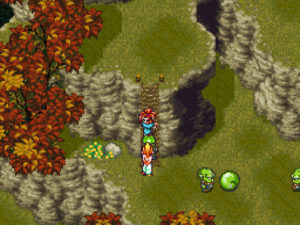 Even if you aren’t a fan of classic JRPGs, this article provides some valuable insight into the design elements that went into Chrono Trigger, and made it stand out as a classic more than twenty years after its release. While the approaches they chose aren’t universally applicable, it does demonstrate how some very conscious, careful design and willingness to step “outside the box” a little bit made for a legendary experience. The take-away is: This design didn’t happen by accident. It also demonstrates the tricks to having an open-feeling game follow a somewhat linear narrative (I’m not sure that’s necessarily a great goal, but it’s a viable solution to a very tricky problem).
Even if you aren’t a fan of classic JRPGs, this article provides some valuable insight into the design elements that went into Chrono Trigger, and made it stand out as a classic more than twenty years after its release. While the approaches they chose aren’t universally applicable, it does demonstrate how some very conscious, careful design and willingness to step “outside the box” a little bit made for a legendary experience. The take-away is: This design didn’t happen by accident. It also demonstrates the tricks to having an open-feeling game follow a somewhat linear narrative (I’m not sure that’s necessarily a great goal, but it’s a viable solution to a very tricky problem).
Gamasutra: Chrono Trigger’s Design Secrets
Enjoy!
Filed Under: Design - Comments: 3 Comments to Read
At What Cost Survival?
Posted by Rampant Coyote on July 25, 2016
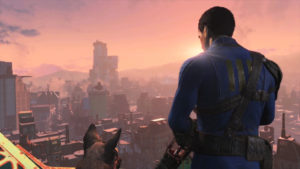 Okay, depending on the game, I like survival mechanics. It’s a not-insignificant part of why I love the Ultima Underworld series so much. Maybe there’s an effective Maslow’s Hierarchy for RPGs or something, but having that base level struggle, particularly at the beginning, can be pretty fun.
Okay, depending on the game, I like survival mechanics. It’s a not-insignificant part of why I love the Ultima Underworld series so much. Maybe there’s an effective Maslow’s Hierarchy for RPGs or something, but having that base level struggle, particularly at the beginning, can be pretty fun.
It’s becoming more common lately. I think this is because of the rise of indie games, and the sad fact that it can be used to help “pad out” limited content. That, and perhaps an effort to recapture the lightning-in-a-bottle that was Minecraft. Or maybe it’s just because it is something that seems to go naturally with zombies. But I will also allow that there are simply a lot of indie game designers out there who, like me, enjoy the survival mechanics.
Maybe they enjoy them a lot more than me. That, or they are really desperate to pad out the content. Because there’s a certain point where the amount of maintenance effort needed to survive really overshadows everything else in the game. Assuming there is much more to the game, of course. In other words, there’s definitely a point where there’s too much of a good thing.
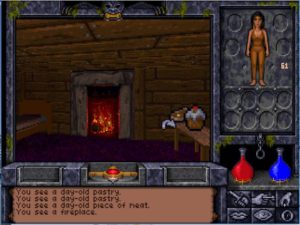 I’m not sure exactly where that sweet spot is. Minecraft hit pretty close, in my opinion. Ultima Underworld perhaps had too light of a touch, overall, but it was still enough to make it interesting. Empyrion – Galactic Survival, even though that’s in its title and thus can probably be considered mostly a survival game, is more than a little overwhelming.
I’m not sure exactly where that sweet spot is. Minecraft hit pretty close, in my opinion. Ultima Underworld perhaps had too light of a touch, overall, but it was still enough to make it interesting. Empyrion – Galactic Survival, even though that’s in its title and thus can probably be considered mostly a survival game, is more than a little overwhelming.
Maslow’s pyramid sets physical needs as the basic elements that form the foundation. This includes food, water, air, and protection from the elements. The next level is safety. In many survival-oriented games, that’s as often as not a bolt-hole from enemies. After that… well, after that, the game-worlds will have somewhat different analogs to the real world.
Minecraft captured this in the critical “first day” experience (in survival mode)… you start out at full health and fully satiated. The base physical needs are not in jeopardy, so you are free to work on the next stage of the hierarchy – safety. Inevitably, you don’t have enough time to do a great job of it before nightfall and the monsters come out. Plus, you have to be thinking ahead as to where you’ll get your next meal from. You may be fine for about 24 hours of game time, but after that you are going to need food somehow.
For me, the way I play, the basics are generally reasonably covered by the third day. I have food (if not much variety), a safe location that’s expanding and undergoing aesthetic improvements, and I’m into a regular cycle of exploring and then converting the explored territory into somewhat safe locations. I’m primarily exploring, fighting, and conquering, with some safety-building and occasional efforts to harvest / improve my food sources.
(Interestingly, Minecraft also adds an additional level of the pyramid, perhaps just above safety… illumination. You spend most of the game in darkness, either at night or down below ground. You can technically still get around in darkness, but it’s very difficult, and can be dangerous. Creatures won’t spawn in well-lit places, and they are much easier to see and fight when they move into the light.)
I suspect that it really comes down to good ol’ fashioned variety. It’s absolutely fine for a game to start you out at the bottom of the hierarchy and have you scavenging for the basics. And it’s good to have that element never entirely go away. But there’s a certain point where at least a chunk of those basics really do have to become automated or self-sustaining so the player can really make progress forward into other areas without constantly needing to make sure he or she isn’t going to run out of critical resources on the way.
Or, perhaps another way of putting it… maintenance costs (in terms of player time / effort) should drop considerably at each stage of the game. Maybe not perfectly or consistently… it’s fine to have to deal with the occasional emergency like an enemy attack to your supplies or production chain. But otherwise, progress should be the ability to pay less and less attention to those lower levels of survival.
Filed Under: Design - Comments: Comments are off for this article
Games vs. Stories, Revisited
Posted by Rampant Coyote on July 21, 2016
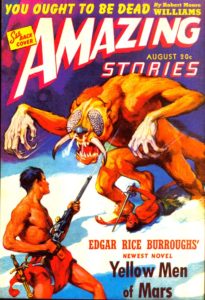 I have often posited that you can have a great game, or a great story, but not both.
I have often posited that you can have a great game, or a great story, but not both.
Having spent some time improving (well, reducing the suck level of) my fiction-writing chops, I think I’m ready to offer a more informed opinion:
You can have a great game, or a great story, but not both.
Right, no change. Actually, it’s been reinforced. Now, I feel you can have a great game with an acceptable story, and vice versa. And you can have a great game with a story that stands out among other game stories. I’ve played several of those, and I love them.
By way of further explanation: A game can have a great story if the player has little or no control over the story. But in my opinion, that detracts from the interactivity, and the point of games is interaction, so it in turn detracts from the quality of the game-playing experience.
It’s the difference between active participation and being a spectator. If you are an athlete, you are going to perform your absolute best in a serious competition. You are going to do your best to run up the score, to break personal records, and defeat the competition by a wide margin of safety. As a spectator, however, the sport is most exciting when it is a close game all the way at the end. The winning three-point shot right at the buzzer marks the end of a spectacular game for you, not the running-out-of-the-clock in the last two minutes for the team that has a commanding lead.
This is exactly the problem of story vs. gameplay. In a good story, the princess isn’t just in another castle. No, going into the final act, not only is the princess in another castle, but by raiding the castle looking for the decoy princess, you just unsealed a demonic army that is now ready to attack your kingdom. The main bad guy took you awesome sword and armor for himself, and in your absence your scumbag cousin Clayton got engaged to the real princess. You haven’t become more powerful with an awesome BFG or hitting level 70. No, you are in worse shape than when you started, bruised, bleeding, naked, humiliated, and everything else except broken.
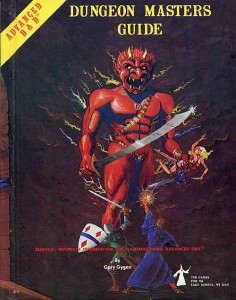 This is story. And if I was playing an RPG where that crap happened to me in spite of my best efforts, I’d probably quit playing. Although “playing” might be the wrong term for that kind of railroading. I absolutely hate it when I’m playing a game and very carefully avoiding / preventing a potential ambush, only to have a cut-scene happen where I suddenly become STUPID and walk right into it, with bad guys materializing from nowhere.
This is story. And if I was playing an RPG where that crap happened to me in spite of my best efforts, I’d probably quit playing. Although “playing” might be the wrong term for that kind of railroading. I absolutely hate it when I’m playing a game and very carefully avoiding / preventing a potential ambush, only to have a cut-scene happen where I suddenly become STUPID and walk right into it, with bad guys materializing from nowhere.
A good story is about failure. Lots of failures, and successes that came at such a dear cost they might as well be failures, all the way to the end where the hero snatches victory from the jaws of defeat. But playing a game is about minimizing those failures.
So… yeah. As a game developer, you have to compromise one or both. Now, this isn’t a message of doom-and-gloom, and I’m right there with you if you want to throw around some favorite game stories as counter-examples. I love RPGs partly because they are so story-heavy. I’ve got a bag of tricks of my own I’m trying to use to get around this fundamental limitation. But the important part is recognizing that it’s a fundamental limitation.
Filed Under: Design, Writing - Comments: 5 Comments to Read
Heinlein’s Rules and the Resubmission Blues
Posted by Rampant Coyote on July 20, 2016
I understand that one of the key tricks to being successful as a writer (or, really, anything else in life) is perseverance. The first Harry Potter book was rejected a dozen times before it was finally accepted for publication. Which means that only one in thirteen editors that reviewed the manuscript thought it was good enough to be even moderately successful. Can you imagine being one of the acquisitions editors who passed that one up? Hoo-boy.
But yeah. I’m glad Rowling stuck with it. I just submitted a story for about the … fourth time, I guess. Which is nothing. I was even given some good feedback on it and told that it had made the second cut in one anthology. So… positive stuff. This is an older story, and I’ve improved since then.
It’s very easy for me to now assume that the story’s no good and that I should quit trying to submit it anywhere. I should focus on new stuff, right?
Now, I don’t think I’m writing at pro level yet. And with the effort I’m putting into game development, it’s not a constant part-time venture. I don’t think I’m good enough or professional enough yet to be able to fully embrace Heinlein’s Rules, but I am trying to move in that direction. Heinlein’s Rules (for professional writers) are:
#1: You Must Write
#2: Finish What Your Start
#3: You Must Refrain From Rewriting, Except to Editorial Order
#4: You Must Put Your Story on the Market
#5: You Must Keep it on the Market until it has Sold
The first two should be pretty obvious. Regardless of quality, you can’t possibly get published if you have nothing actually completed. Even as a beginner, there’s a lot more to learn from a single finished manuscript than twenty opening chapters.
The third can get controversial, but I think if taken to mean “minimize edit and rewrite effort until told otherwise by your editor,” it’s still fairly appropriate. Technology has changed to reduce the necessary effort in the first place. I imagine that this has raised the competitive bar a tad from the days when Harlan Ellison started writing live in bookstores and tape the pages to the window as they came off his typewriter. But … bottom line… there’s a law of diminishing returns, so don’t keep tinkering with it forever.
The fourth and fifth go hand-in-hand. Submit, and then resubmit the rejections to another market. For the pros I know who write short stories do exactly that. My three rejections so far are nothing. Right? Right?
I guess when it all comes down to it, if you are following (more or less) Heinlein’s Rules, by the time you get to the third or fourth rejection for a single story, you don’t have enough invested in the story to care. You’re already several stories down the road, or maybe a full novel down the road. No big deal. Keep writing, keep writing better.
At least that’s the theory. I’ll let you know if I have to submit it a fifth time.
Filed Under: Writing - Comments: Read the First Comment
The Most Awful Idea Ever for an Augmented Reality Game
Posted by Rampant Coyote on July 18, 2016
Pokémon Go has become the gaming fad of the season. I haven’t played due to not having enough memory on my phone. But I have a lot of friends playing. As both a gamer and game designer, I respect the idea.
In my opinion, one of the biggest things it has done has been to prove the viability of Augmented Reality (AR) gaming. Although I assume most players aren’t familiar with the term. All they know is that you go through the real world to play Pokémon. It’s the first mega-hit in that field. There is new technology on the horizon that will make Augmented Reality even cooler… like (potentially) the Microsoft HoloLens.
Mapping fantasy onto reality – giving daydreams a physical form – is a very cool idea that’s been around for a long time, but the technology hasn’t been where we could do much with it, until now. The Void is coming at it from the VR direction… mapping the real-world to fit a fantasy. But the AR side… putting fantasy into the real world… has more consumer-level potential.
But there are some dangers when we start blurring the line between fantasy and reality. We’ve already seen some issues with Pokémon Go appearing in the news. But even barring the dangers of malware and spying, of an AR game leading you into a dangerous real-world situation, there’s one idea for a game which is just…. terrifyingly bad. And yet tempting at the same time.
Maybe it’s just because I have a vivid imagination, but turning your own home into a survival-horror AR game just sounds… bad. Really bad. Because what has been seen cannot be unseen, and I can’t imagine turning my safe place, my refuge from the world, into an AR horror.
So, naturally, it’s being done. Probably by several developers. I just know of this one, Night Terrors.
Okay, I’d be lying if I said it wasn’t a little bit tempting. Just a little. Because I AM STUPID. In this particular game, you play by turning off all the lights and letting your smartphone illuminate the room with its LED light. You are supposed to play with headphones on. You see everything through the camera’s screen and get a glimpse of how haunted and horrifying your home is.
Yeah. Brilliant idea. Good luck sleeping without the lights on, like, EVER AGAIN. But… there’s no requirement that you play it in your own home. Any indoor location you might be… in the dark… will do.
The game isn’t out yet. It’s in beta right now. Somehow, Pokémon Go seems like a better choice.
Filed Under: Indie Horror Games - Comments: 2 Comments to Read
That Music Sounds Familiar…
Posted by Rampant Coyote on July 15, 2016
So in addition to having amassed a pretty gigantic library of video games that I haven’t actually had time to play, I have amassed a pretty substantial library of video game music. One of the advantages of going through GOG.COM was that you used to get the soundtracks as free bonus files. That was before game developers learned that you could charge more for the independent soundtrack, I guess.
I’ve also picked up soundtracks in bundles and so forth. In fact, there have been a couple of times I’ve picked up a game because of the soundtrack. Anyway, the end result is that I have a music library of game soundtracks, ranging from the old MIDI-style music converted into MP3s, to fully orchestrated pieces worthy of a big-budget film. Enough that I could play everything in the library 24-7 for many days without a single repeat. Some of the music is familiar, giving me fond memories of hours spent playing some great games. Some is unfamiliar, and I just enjoy listening to it because it’s good.
I listen to it a lot, especially when I’m working on game development. Inspirational music. Both the familiar and the unfamiliar. So in spite of the size of the library, on random play I’ve heard everything multiple times.
What gets really funny is when a certain score becomes very familiar to me, and then I finally play the game its based on. Some subconscious part of my brain tells me that something is wrong because the music is so familiar, the game should be familiar … but it is not.
Yeah, game geek problems, I know. I’m not really complaining, just making an amused observation.
Filed Under: Geek Life - Comments: 2 Comments to Read
What Game Could I Build for a Million Dollars?
Posted by Rampant Coyote on July 13, 2016
So let’s say you were given a million dollars to build your dream game. Could you? At least in the U.S., the chances are… well, only if you don’t dream very big.
Michael Fitch tackles the question in “What Does $1 MM Buy in Game Development?”
I don’t know what it would take to have indie games from a small, say, 6-person or 8-person studio bring in a consistent $1 million per year. If I did, I’d try and do that. 🙂 But that’s the flip side… budget has to be scaled to expected, consistent return. That’s what’s clobbering the videogame industry right now… not that there’s been a time where it hasn’t been a problem.
And if you are wondering why DLC and “freemium” and annual fees on software have become a thing, that’s the reason right there.
Filed Under: Game Development - Comments: 2 Comments to Read
Raph Koster: AR (Augmented Reality) is an MMO (Massively Multiplayer Online game)
Posted by Rampant Coyote on July 12, 2016
There’s a lot here that I’m still getting my head around:
I’m not sure I’d go so far as to say AR is an MMO. Not fundamentally. But in the context of Pokemon GO…. they really did create an MMO, and set it in the real world. Even non-players are at least peripherally involved… or more deeply involved, when it comes to kicking players out of their back yards.
But neither AR nor VR need be MMOs. Especially VR. But AR does have the challenge of being set in real-world spaces, which by definition are shared. Playing a game of virtual blocks on your real-world living-room floor might technically have the potential to include other players or just other people accidentally disrupting your game, but I’d have a tough time calling it “Massively Multiplayer.”
But there is more to it than this… something I should probably explore more in a future post (and once I have a bit more experience in things, too). I’m talking about the impact VR and AR have on real life. Fundamentally, we’ve taken our entertainment and experiences to the point where they are willfully induced hallucinations, screwing around with our perception of reality in obvious but also potentially subtle ways. The lines between reality and fantasy, real-life and just-a-game are blurrier than ever, yet still within our control. So maybe some new lines may need to be drawn.
Filed Under: Virtual Reality - Comments: Read the First Comment
Best Dungeon Crawlers of All Time?
Posted by Rampant Coyote on July 11, 2016
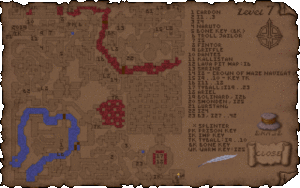 IGN writers Jared Petty and Chloi Rad dare a task that I don’t think I’d be willing to tackle.. naming the top ten dungeon-crawlers of *ALL TIME*. I say I wouldn’t dare because I don’t think I could narrow my list down to the top ten, let alone attempt to order them. I’d argue with myself over every decision, long before anyone else argues with me.
IGN writers Jared Petty and Chloi Rad dare a task that I don’t think I’d be willing to tackle.. naming the top ten dungeon-crawlers of *ALL TIME*. I say I wouldn’t dare because I don’t think I could narrow my list down to the top ten, let alone attempt to order them. I’d argue with myself over every decision, long before anyone else argues with me.
And you know there’s no doubt this is the kind of thing that invites arguments. Even the definition might draw some nitpicking. Not all RPGs are Dungeon Crawlers (most are not), and not all Dungeon Crawlers are RPGs (but most are, if you count Roguelikes as RPGs, which I do).
However, there are some titles here that I would probably see in my own personal top 10. Wizardry, Ultima Underworld, and Nethack would be shoo-ins. I haven’t played enough Angband to really judge (although I understand it was based on / inspired by Moria, which I loved, way back when). Diablo 2… maybe. Torchlight 2 probably wouldn’t make my top ten, but maybe by top 20 or 25. I haven’t played the Etrian Odyssey or Mystery Dungeon series, so I really can’t say.
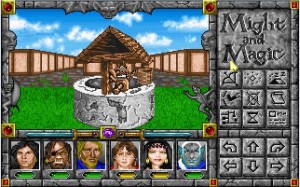 I think something from Might & Magic would probably make its way into my top 10… probably World of Xeen, which even today is something of a staggering accomplishment. Granted, that has lots of outdoor adventuring too, but so does Torchlight 2 and Diablo 2. The emphasis is more on the “labyrinthine environment” than whether or not it takes place underground.
I think something from Might & Magic would probably make its way into my top 10… probably World of Xeen, which even today is something of a staggering accomplishment. Granted, that has lots of outdoor adventuring too, but so does Torchlight 2 and Diablo 2. The emphasis is more on the “labyrinthine environment” than whether or not it takes place underground.
Eye of the Beholder II: The Legend of Darkmoon was my favorite of that series, which took the Dungeon Master gameplay and mixed it with Advanced Dungeons & Dragons rules for what was really an amazing time. The Gold Box series… even going back recently and playing some of those, they hold up well. Technologically, not so much, but dang they are still fun. I’m not sure which would be my choice. Pool of Radiance I remember loving the most, but they really refined things (and hadn’t gotten stale yet) with Curse of the Azure Bonds. I didn’t play all of them (yet), so there may be a better one on the list. (I had a heck of a lot of fun with Forgotten Realms Unlimited Adventures – AKA FRUA – too).
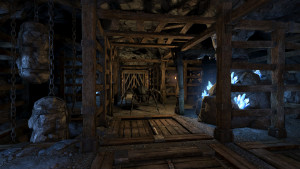 The Legend of Grimrock 2 and Might & Magic X: Legacy are pretty awesome recent entries. I doubt they’d be all-time top 10 candidates, but they’d rank highly. The Bards Tale 1 occupies a very fond dungeon-crawling spot in my memory, but I can’t really say it was all that worthy. It may rank higher in my mind from nostalgia more than anything else.
The Legend of Grimrock 2 and Might & Magic X: Legacy are pretty awesome recent entries. I doubt they’d be all-time top 10 candidates, but they’d rank highly. The Bards Tale 1 occupies a very fond dungeon-crawling spot in my memory, but I can’t really say it was all that worthy. It may rank higher in my mind from nostalgia more than anything else.
There are some other RPGs that I might rank more highly, but I don’t know if I’d label them “Dungeon Crawlers.” And you’ll notice that I don’t have any console games on the list. Yeah, I’ve played a couple that might count, but none that are great.
Being who I am, of course, the Frayed Knights series would be up there. But I’m terribly biased. And there are only a tiny handful of us for whom that is currently a “series” and not a single title. Dang, I can’t wait to get that second one out.
So what’s your take?
IGN: The Top 10 Dungeon Crawlers of All Time
Filed Under: General - Comments: 4 Comments to Read
Video Card Upgrade
Posted by Rampant Coyote on July 8, 2016
It is weird to wax nostalgic over the video cards of the early days of PC hardware accelerated graphics… cards like the Voodoo and Voodoo 2, and the Nvidia Riva 128 and TNT. Really, compared to now, those cards were beyond pathetic. I think the nostalgia factor for me comes more from the era… the seismic change they represented for gaming. It’s hard to imagine that now, although mobile gaming and perhaps Virtual Reality might be analogous to how big of a shift that was.
The very first cards were barely even worthy of being considered “accelerators.” I remember one that I evaluated that was for 486 machines… and the ‘acceleration’ it offered was to make the 486 play games as well as on a Pentium. Not exactly stellar.
It was 3DFX’s Voodoo that really changed things up, making 3D rendering not only faster than software rendering, but adding additional “free” features that enhanced the visual quality. Here’s a good video showing the difference at the time. It starts with software rendering, and then switches over to using the acceleration. THAT was the difference:
Amusingly, I remember Nvidia at the time being a distant second place to 3dfx but catching up, in the Riva 128 days. I would not have expected to see them become the consumer graphics leader, and eventually purchase what was left of 3dfx.
Since I’m such a fan of indie games and retrogaming, I’m not exactly demanding of my video cards these days. I find it’s much easier on my budget that way. 🙂 Each card generation now offers an incremental improvement over the previous one, not the massive technological leap we had back in the 1990s. My hardware only becomes obsolete by degrees, now.
The latest NVidia cards – the Pascal series, which started releasing last month – are pretty exceptional, and offer a significant performance improvement over the last generation of cards, especially in certain areas (notably virtual reality). Definitely a massive improvement over my GTX 750 (not even the Ti… a plain ol’ vanilla 750). My old card actually runs DOOM (the new one) okay… uh, sometimes. If I get lucky. But that’s some kind of bug or incompatibility, not a hardware capability problem.
But the time has come for an upgrade. I’ve ordered a GTX 1070, which will hopefully last me for a while. It only came out last month. We’ll see how things go. I have more than a passing interest in VR (which I’ve had for decades now), so it’ll at least give me a better-than-baseline starting point for my desktop. I’ll still have to rely on borrowed VR hardware for a bit though. In the meantime, I don’t think I’m going to have to worry about performance problems with gaming for a good, long time.
That’ll probably last me for a while. I hope. Because as much as I look nostalgically back on the bad-ol’-days when 3D acceleration was a new thing, I don’t want to feel like I’m still living in it.
Filed Under: Geek Life - Comments: Comments are off for this article
